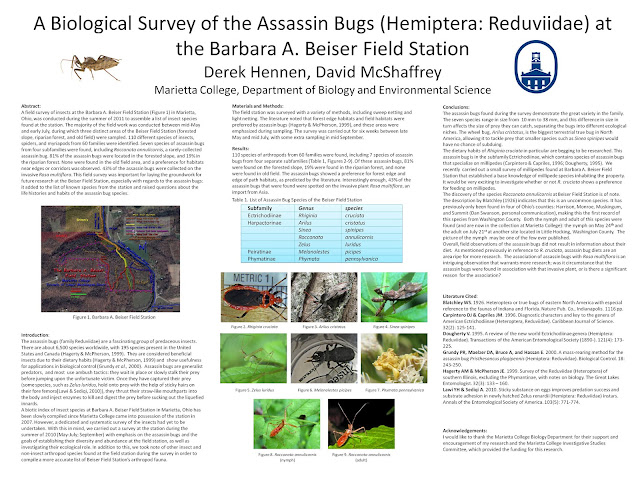Adventures in Entomology: Taiwanese Tenacity

I like to emphasize how science (and entomology in particular) is a field focused on curiosity and exploration. When I'm talking about entomology, I like to call it "the great equalizer." Why? Because it's so easy to make your own discoveries and find something notable. You don't even need an advanced degree--just an interest. Case in point? A Taiwanese shopkeeper named Hsu Kun-chin who likes gardening. This article is from July 2011 (I'm a little late on getting this posted) and is a great story. Hsu Kun-chin discovered new information about the mating habits and molting process of the ogre-faced spiders in the genus Deinopis . Ogre-faced spider: photo by Hsu Kun-chin I suppose I can understand why they call it ogre-faced. It's not as cute as the jumping spiders, but it's still neat. I feel like Hsu Kun-chin and I would get along pretty well; we seem to share some common traits. For example, his family wasn't too keen on him keeping these spider

